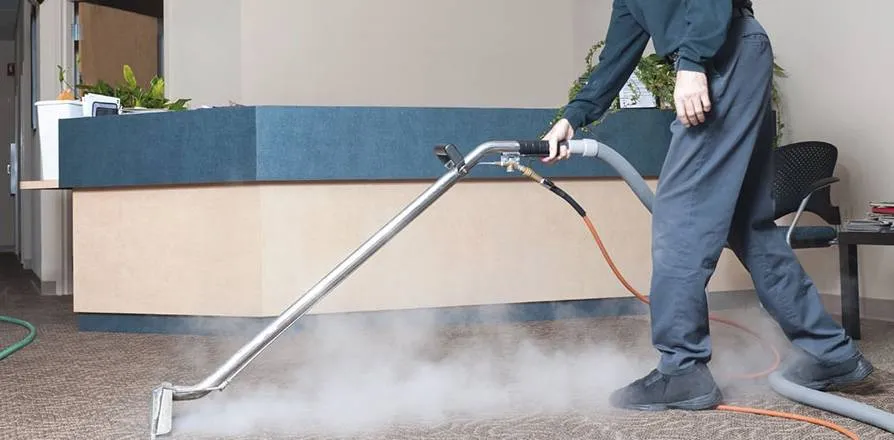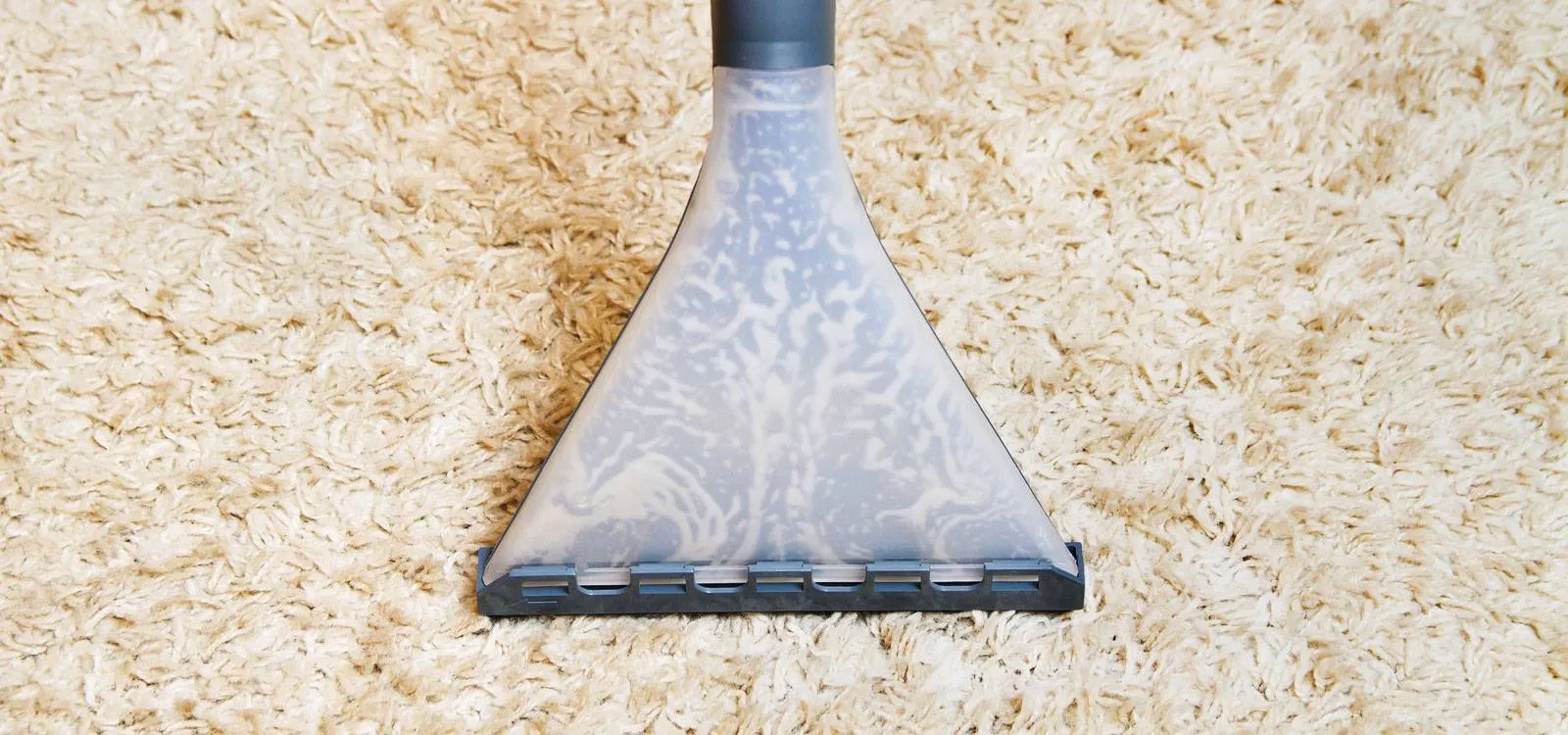Your Guide To Cleaning Different Upholstery Types
Whether you’re dealing with delicate silk, durable leather, or anything in between, we’ve got you covered. Our professional upholstery cleaning service can handle all types of fabrics. Upholstered furniture is essential to our homes, adding comfort and style to our living spaces.
However, these pieces will inevitably collect dust, stains, and odours over time. Don’t worry; we’re here to equip you with the knowledge and tips to maintain and revive your upholstery, ensuring it looks and feels its best. For persistent odours, our specialised odour removal service can help restore your furniture’s freshness.
From luxurious velvet to family-friendly microfibre, we’ll help you navigate the unique cleaning challenges of each type of fabric. Let’s dive in and discover the secrets to keeping your upholstery looking fresh and inviting!
Understanding Upholstery Fabrics
Choosing the right upholstery fabric is crucial when furnishing your home or office. Many upholstery fabrics affect your furniture’s appearance, durability, and comfort.
To make an informed choice, it’s essential to understand the different types of upholstery fabrics available, such as synthetic upholstery fabrics, natural upholstery fabrics, and leather upholstery, as well as their unique characteristics. From luxurious velvets to practical and easy-to-clean options, this guide will help you navigate the world of upholstery fabrics, ensuring your furniture looks great and stands the test of time.
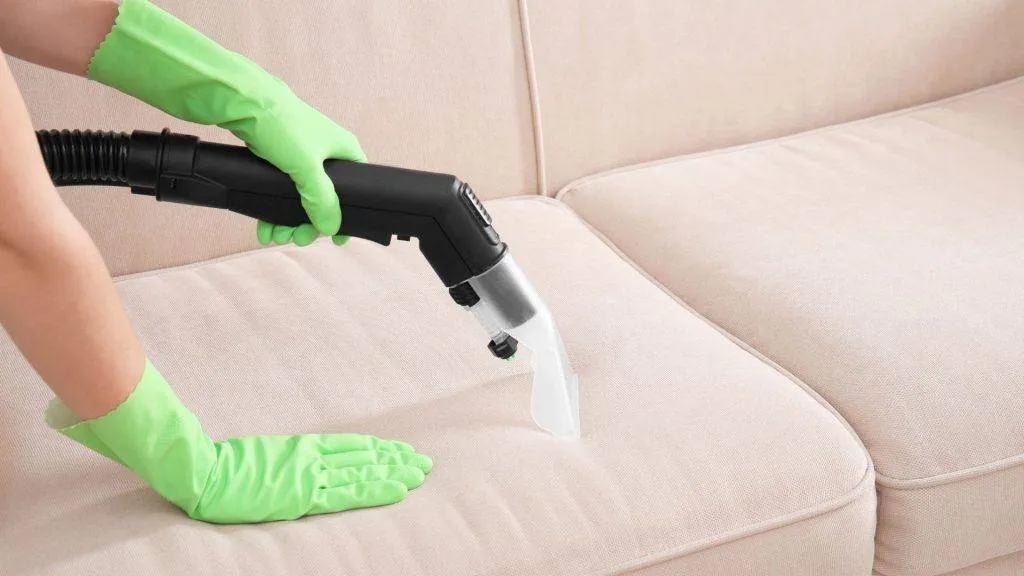
Common Upholstery Stains And Removal Techniques
Accidents happen, and upholstery stains are an inevitable part of life. Knowing how to remove upholstery stains effectively is a valuable skill, whether it’s a spilled glass of red wine, a coffee mishap, or the occasional pet-related incident.
Here, we’ll explore some of the most common upholstery stains and provide tried-and-true removal techniques to help you keep your furniture looking pristine.
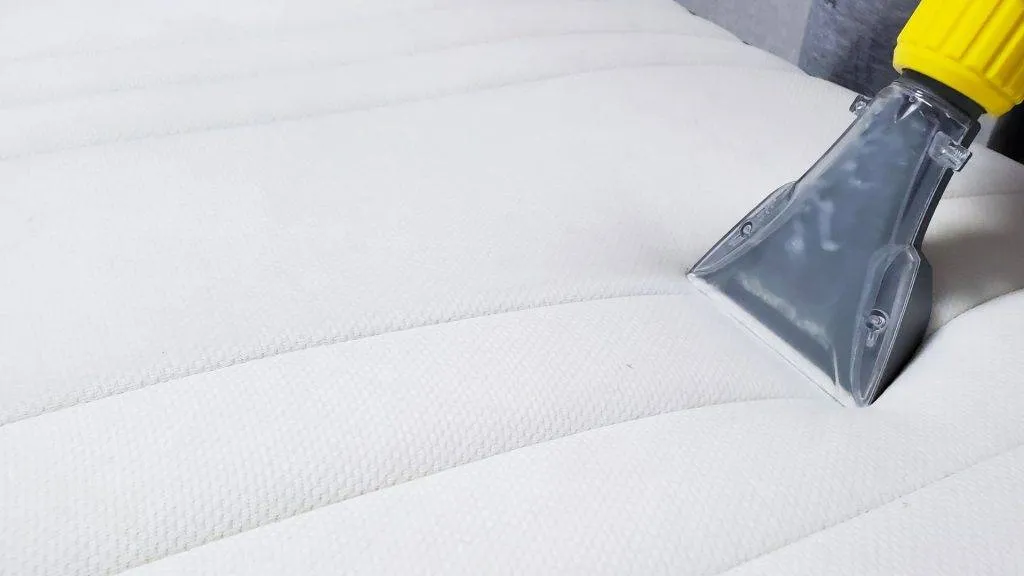
Red Wine Stains
Act quickly by blotting the stain with a clean cloth to absorb as much liquid as possible. For stubborn stains, our professional stain removal service can help. For DIY attempts, mix one dishwashing liquid and two hydrogen peroxide, then gently blot the stain until it lifts.
Coffee and Tea Stains
Blot the stain with a clean cloth, then create a mixture of white vinegar and water (1:1 ratio) to dab onto the affected area. Rinse with cold water and blot dry.
Ink Stains
Place a paper towel under the stain to prevent it from spreading, then apply rubbing alcohol to a clean cloth and gently blot the stain. Rinse with cold water afterwards.
Grease and Oil Stains
Sprinkle cornstarch or baking soda on the stain to absorb the grease. After a few hours, use a vacuum cleaner to vacuum it up and treat the remaining residue with a mild detergent solution.
Chocolate Stains
Scrape off any excess chocolate with a dull knife, then blot the stain with a mixture of cold water and dishwashing liquid. Rinse and blot dry.
Pet Stains
Blot up as much liquid as possible, then apply a mixture of white vinegar and water (1:1 ratio) to neutralise the pet odour. For persistent pet stains and odours, consider our specialised pet stain and odour removal services. Follow up with a mild detergent solution for thorough cleaning.
DIY Upholstery Cleaning Tips
Maintaining clean and fresh upholstery can transform the look and feel of your furniture, making it more inviting and extending its lifespan. While DIY cleaning methods can help with maintenance, professional cleaning ensures the best results. Here’s how to keep your upholstery looking its best between professional cleanings:
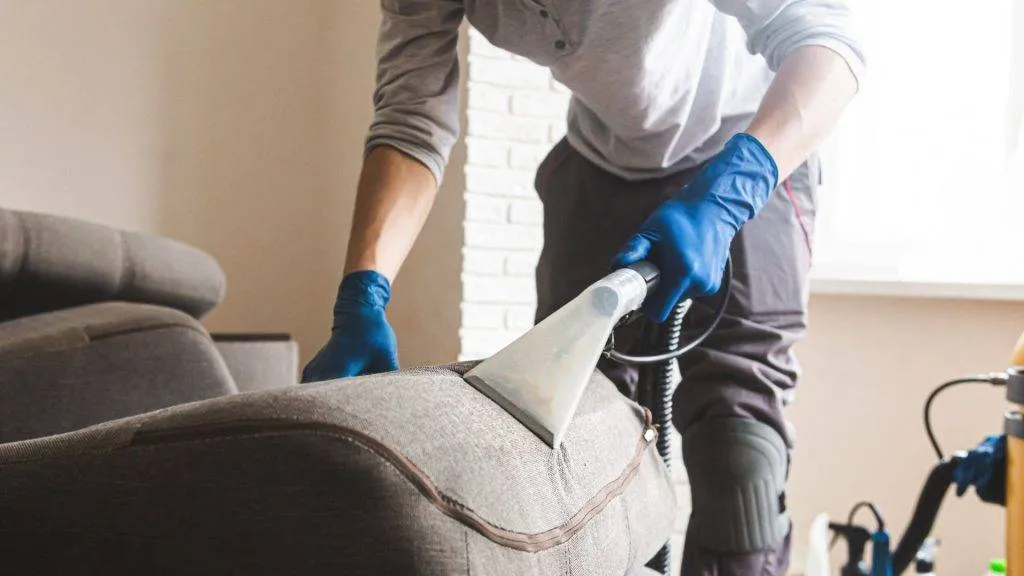
Regular Vacuuming
Begin by regularly vacuuming your upholstery using a brush attachment. This helps remove loose dirt, dust, and debris that can settle into the fabric and cause wear over time. Pay special attention to creases, seams, and corners where dirt accumulates.
Check the Care Label
Upholstery fabrics come with care labels that provide cleaning instructions on cleaning natural upholstery fabrics and different types of upholstery along with their maintenance. Always check these labels before DIY cleaning to ensure you use the appropriate methods and products.
Spot Cleaning
Address stains and spills promptly to prevent them from setting. Blot the stain gently with a clean, dry cloth or paper towel to absorb as much liquid as possible.
Fabric Freshening
Consider sprinkling baking soda over the surface to eliminate odours and refresh your upholstery. Let it sit for at least 15 minutes, then vacuum it up. This simple trick can help neutralise odours.
Steam Cleaning
You can use a handheld upholstery steam cleaner for a deeper clean. Follow the manufacturer’s instructions carefully, and ensure your fabric is suitable for steam cleaning. It’s an effective way to remove embedded dirt and refresh the fabric.
Brush and Fluff
Use a soft brush to restore the nap and fluff the fibres for different upholstery fabrics like suede, natural fibres or microfibre. This can help maintain the fabric’s appearance and texture.
Rotate Cushions
If your furniture has removable cushions, rotate and flip them regularly. This helps distribute wear evenly and extends the life of the upholstery.
Protective Covers
Use slipcovers or protective covers to shield your upholstery from spills and stubborn stains, especially if you have children or pets.
Professional Cleaning
While DIY wet cleaning can be effective for routine maintenance, it’s recommended to schedule professional upholstery cleaning every 1-2 years, depending on use and fabric type. Our experts have the equipment and expertise to deep-clean and revitalise your upholstery.
Maintenance And Prevention Tips For Your Upholstery
A proactive approach to maintenance and prevention is essential to ensure your upholstered furniture remains in excellent condition and continues to adorn your space with comfort and style. Establish a regular vacuuming routine at least weekly to keep your upholstery looking its best. This removes loose dirt before it accumulates and pays special attention to high-traffic cushions.
Also, rotate and flip cushions often to distribute wear evenly across the fabric. Arrange furniture to avoid prolonged sunlight exposure that can fade and damage fabrics. Using armrests and headrest covers can protect areas prone to oils and dirt from skin contact.
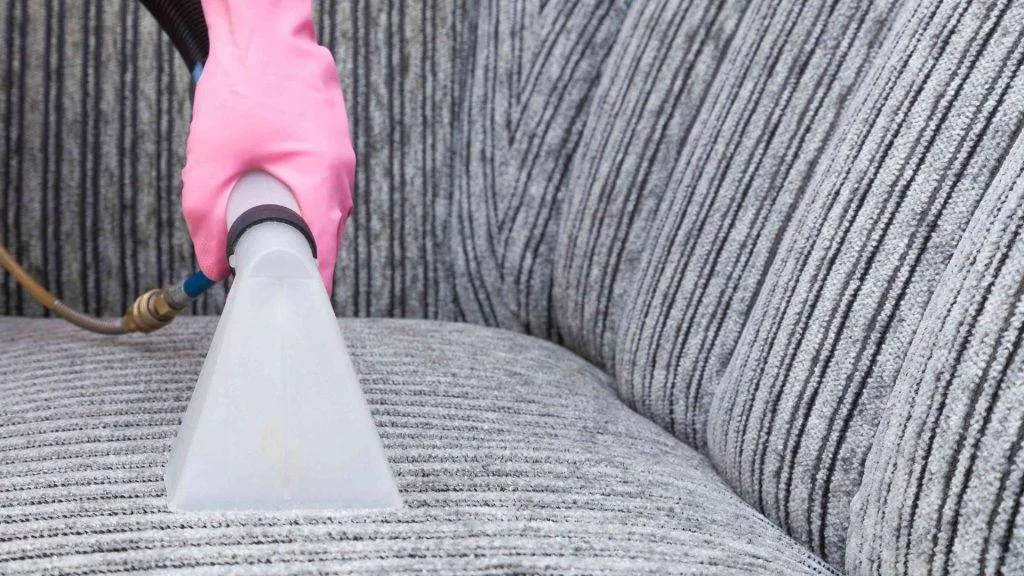
Implementing a “no food or drinks” rule prevents many stains in the first place. If you have pets, use covers and regularly groom them to minimise fur and shedding issues. Consider applying a stain-resistant treatment to repel liquids and make stain removal easier. For pieces with removable cushions, fluff and reshape regularly following the manufacturer’s recommendations.
Additionally, schedule professional deep cleanings periodically to revitalise upholstery thoroughly. When storing furniture long-term, cover it with breathable protectors. Always follow the manufacturer’s care instructions for your specific fabric. Proper routine care preserves your upholstery for many years.
Refresh, Renew, and Revive with The Carpet Surgeon
We hope this guide has been a valuable resource in your quest to maintain the beauty and cleanliness of your upholstered furniture. Remember, each type of upholstery demands its unique care and attention, but armed with the right knowledge and cleaning techniques, you can extend the life of your cherished pieces and keep them looking as good as new.
If you ever face upholstery cleaning challenges requiring professional assistance, we’re here to help. Our experienced team specialises in comprehensive upholstery cleaning services, including:
- Professional lounge and sofa cleaning
- Expert upholstery stain removal
- Specialised upholstery odour treatment
Ready to restore your upholstery to its former glory? Book our professional cleaning services online today and experience the Carpet Surgeon Gold Coast difference.
Related Articles:

